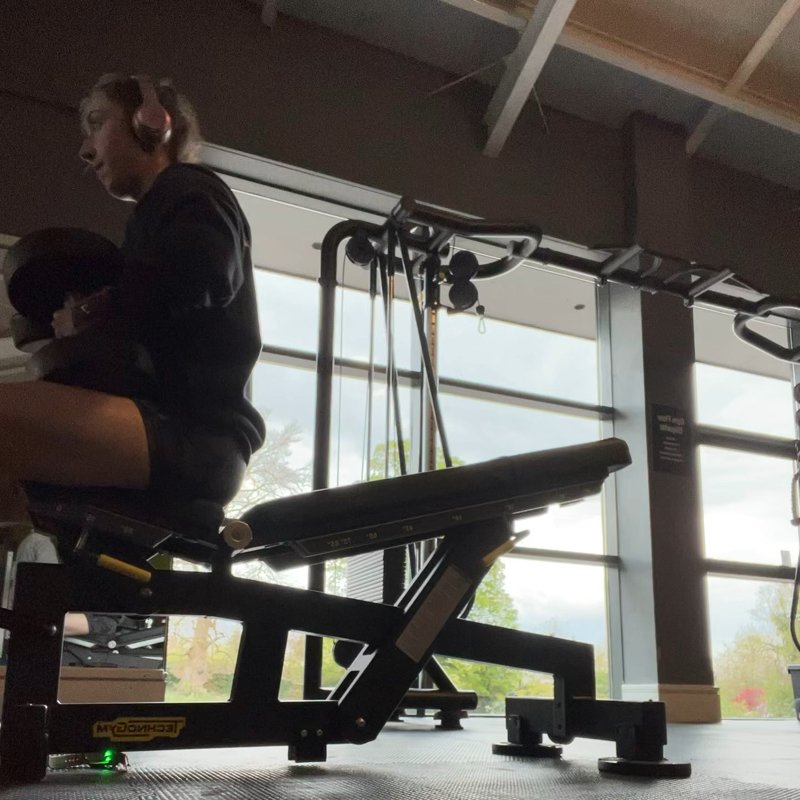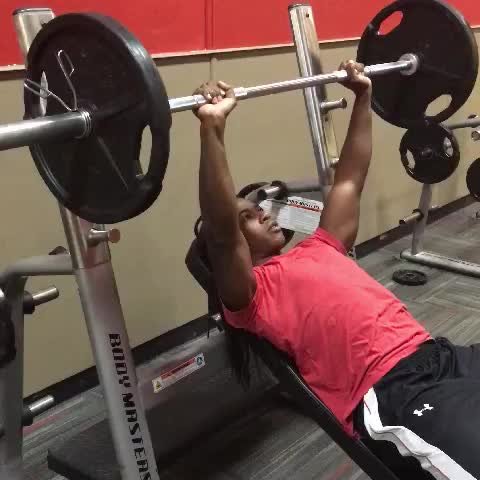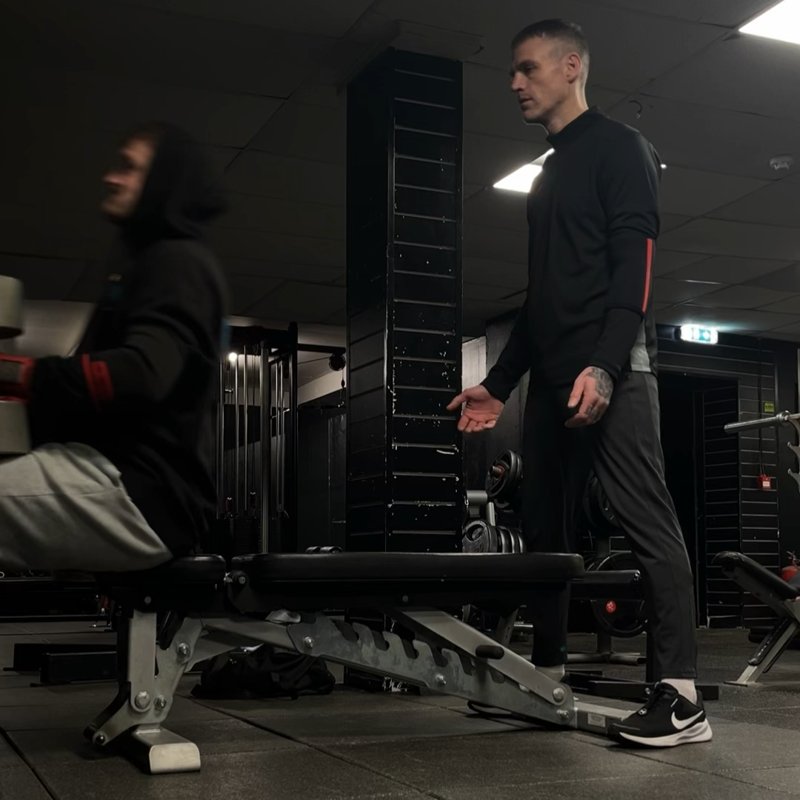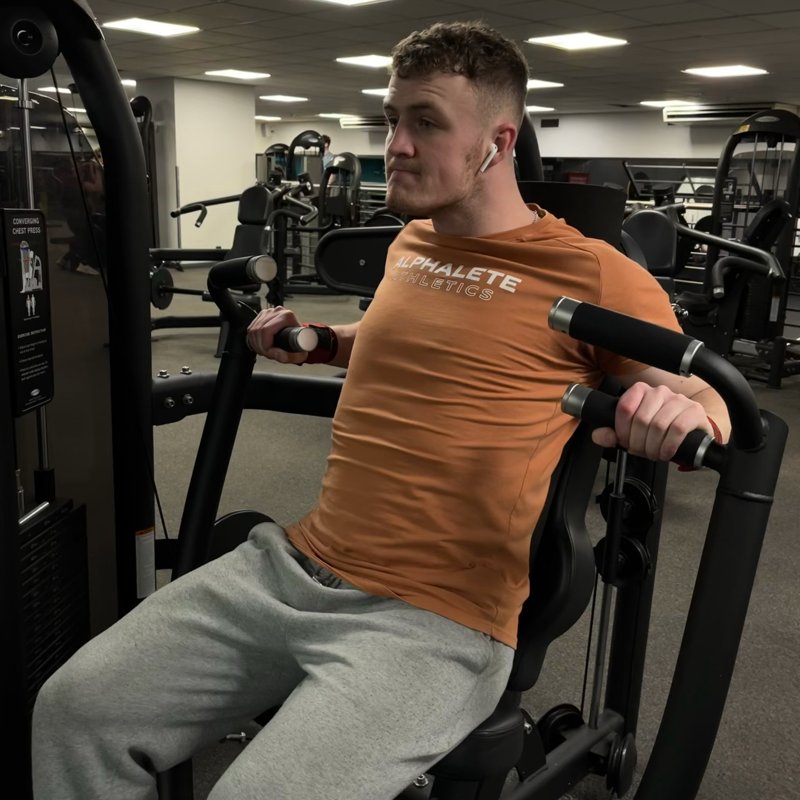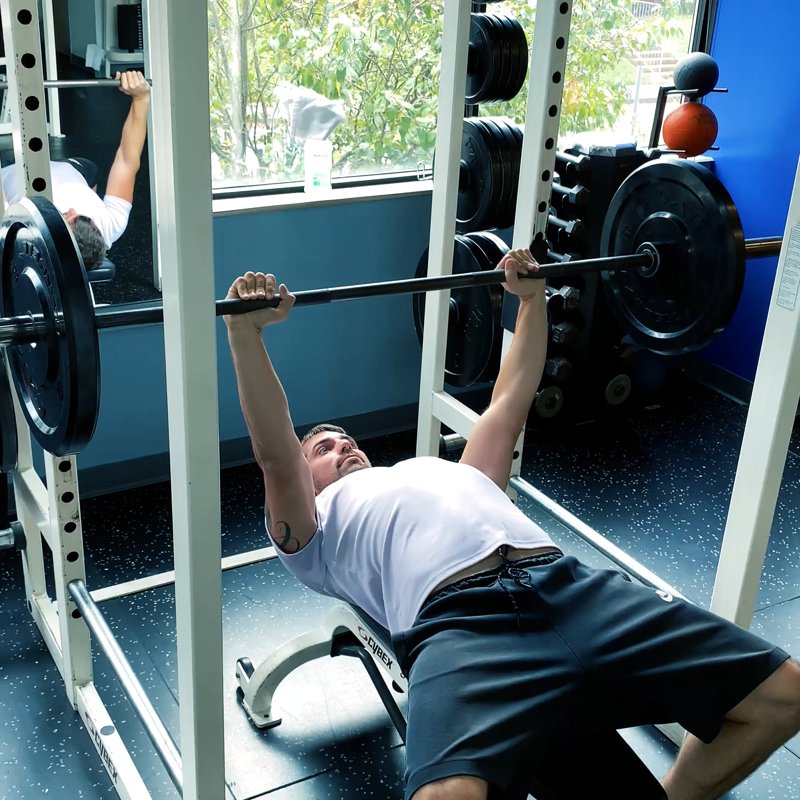Smith Machine Incline Bench Press: The Ultimate Guide
The Smith Machine Incline Bench Press is a guided variation of the traditional incline press that targets the upper chest muscles while providing additional stability and safety, making it ideal for both beginners and experienced lifters focusing on upper pectoral development.
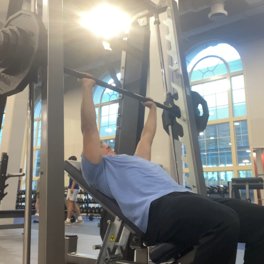
Quick Facts
Key Benefit
Upper chest development with enhanced stability
Primary Muscles
Anterior Deltoids, Pectoralis Major, Triceps
Secondary Muscles
Abdominals, Pectoralis Minor
Equipment
smith machine, incline bench
Difficulty
Beginner
Type
Strength
In This Guide
Ready to master the Smith Machine Incline Bench Press?
Track your progress, see improvements over time, and build strength consistently.
Download GravitusThe Smith Machine Incline Bench Press is a valuable variation of the traditional incline barbell press that offers unique advantages for chest development. By combining an inclined bench position with the guided movement pattern of a Smith machine, this exercise allows for targeted upper chest stimulation with enhanced stability and safety features. While free-weight exercises provide greater activation of stabilizing muscles, the fixed vertical or slightly angled path of the Smith machine allows lifters to focus more directly on the primary muscles being targeted. This makes it an excellent option for those looking to isolate the upper chest or for beginners still developing the coordination required for free-weight pressing. Additionally, the safety mechanisms of the Smith machine—including lockout hooks at various heights—provide an extra layer of security when training without a spotter, making it suitable for pushing to muscular failure more safely than with free weights. Whether used as a primary chest builder or as a supplementary exercise to traditional incline presses, the Smith machine incline bench press offers a valuable tool for developing stronger, more defined upper pectoral muscles.
Benefits of the Smith Machine Incline Bench Press
The Smith machine incline press offers several distinct advantages for chest training.
Upper Chest Emphasis
The inclined angle shifts focus to the clavicular (upper) head of the pectoralis major, helping to develop the often underdeveloped upper portion of the chest.
Enhanced Stability
The fixed bar path eliminates the need to balance the weight horizontally, allowing for greater focus on pressing strength rather than stabilization.
Safety Features
The ability to quickly hook the bar at various heights provides built-in safety without requiring a spotter, especially valuable when training to failure.
Isolation
The guided movement reduces the role of stabilizing muscles, potentially allowing for greater direct stimulus to the primary movers (chest, shoulders, and triceps).
Consistent Repetitions
The fixed path ensures each repetition follows the same trajectory, which can help maintain proper form throughout fatigue and create consistent muscle stimulus.
Proper Form & Technique
Setup
- Position an incline bench inside the Smith machine at approximately a 30-45 degree angle (30 degrees emphasizes chest more, while steeper angles increase shoulder involvement).
- Align the bench so that when lying down, the bar path will contact your upper chest while allowing your shoulders to remain stable on the bench.
- Adjust the safety stoppers at a height that would prevent the bar from crushing you if you were to fail a repetition.
- Set the starting bar height so you can reach it with arms extended or nearly extended when lying on the bench.
- Lie on the bench with your feet flat on the floor for stability, shoulders and head supported by the bench.
- Position your eyes approximately under the bar, depending on the angle of the Smith machine track.
Starting Position
- Grip the Smith machine bar with a medium to slightly wider than shoulder-width grip, hands evenly spaced.
- Rotate your wrists to unlock the bar from its hooks (depending on the Smith machine design).
- Unrack the bar by fully extending your arms, maintaining retracted shoulder blades and a slight arch in your lower back.
- Lower the bar until it's directly over your upper chest/lower neck area, establishing your starting position.
Movement
- Inhale and lower the bar with control toward your upper chest (approximately at the level of your clavicles).
- Keep your elbows at a 45-75 degree angle relative to your torso, avoiding excessive flaring.
- Touch the bar lightly to your chest without bouncing.
- Push the bar upward by driving through your chest, shoulders, and triceps, following the fixed path of the Smith machine.
- Exhale as you press, extending your arms without fully locking out the elbows at the top to maintain tension.
- Repeat for the desired number of repetitions, maintaining control throughout the movement.
- Upon completion, rotate the bar to engage the hooks and safely rack the weight.
Key Form Tips
Bench Positioning
Ensure the bench is centered so the bar path aligns with your upper chest, not your face or lower chest.
Elbow Angle
Keep elbows at approximately 45-75 degrees from your torso to protect your shoulders while effectively targeting the chest.
Shoulder Blades
Maintain retracted (pinched together) shoulder blades throughout the movement for stability and shoulder safety.
Foot Placement
Keep feet flat on the floor and use leg drive to enhance stability and pressing power.
Bar Path
Follow the fixed path of the Smith machine, focusing on controlling the weight rather than fighting against the predetermined track.
Muscles Worked
Primary Muscles
- pectoralis major: The clavicular (upper) head of the chest is the primary target, responsible for the pressing movement and shoulder flexion component of the exercise. While the focus is on the upper chest, the middle and lower portions of the pectoralis major still contribute to the movement.
- Anterior Deltoids: The front shoulders contribute significantly to the press, particularly with steeper incline angles.
- triceps: The three-headed muscle on the back of the arm works to extend the elbow during the pressing phase.
Secondary Muscles
- pectoralis minor: This muscle along the lateral rib cage assists in scapular protraction at the top of the pressing movement.
- Coracobrachialis: A small muscle in the upper arm that assists with shoulder flexion during the pressing motion.
- abdominals: The abdominals, obliques, and lower back work isometrically to maintain proper positioning on the bench.
Common Mistakes and How to Fix Them
Improper Bench Angle
Setting the bench too flat negates upper chest emphasis, while too steep shifts the focus to shoulders. Optimal upper chest activation generally occurs at 30-45 degrees - start at 30 degrees if upper chest development is your primary goal.
Bouncing the Bar
Using momentum by bouncing the bar off the chest reduces muscle tension and increases injury risk. Control the eccentric (lowering) phase and touch the bar lightly to your chest before pressing, avoiding any bouncing motion.
Lifting Hips Off the Bench
Raising the hips reduces chest engagement and can strain the lower back. Keep your glutes in contact with the bench throughout the movement, using leg drive for stability rather than to artificially increase leverage.
Excessive Elbow Flare
Having elbows at 90 degrees to the torso places unnecessary stress on the shoulder joints. Keep elbows at a 45-75 degree angle relative to your body for better shoulder health and chest activation.
Incomplete Range of Motion
Not lowering the bar to chest level or failing to extend arms sufficiently at the top reduces effectiveness. Utilize the full range of motion that your mobility safely allows, while maintaining form and tension on the target muscles.
Smith Machine Incline Press Variations
Grip Variations
-

Close-Grip Smith Machine Incline Press
Using a narrower grip shifts emphasis to the triceps while still engaging the upper chest, excellent for developing pressing power and arm thickness.
-

Wide-Grip Smith Machine Incline Press
A wider hand placement increases chest fiber recruitment and decreases triceps involvement, potentially creating greater pectoral width.
-

Reverse-Grip Smith Machine Incline Press
Using an underhand (supinated) grip can increase upper chest and biceps recruitment while being gentler on some shoulder conditions.
Technical Variations
-

Paused Smith Machine Incline Press
Adding a 1-3 second pause at the bottom position eliminates momentum and increases time under tension for greater muscle development.
-

Tempo Smith Machine Incline Press
Controlling specific timing for each phase (e.g., 3 seconds down, 1 second pause, 1 second up) to increase time under tension and muscle stimulus.
-

Partial Rep Smith Machine Incline Press
Performing the exercise through a limited range of motion (either top half or bottom half) to overload specific portions of the strength curve.
Frequently Asked Questions
The Smith machine version offers more stability and safety, allowing you to potentially lift heavier weights or train to failure with less risk when working without a spotter. The fixed path reduces the need for stabilizing muscles, which can be both an advantage (more direct stimulus to prime movers) and disadvantage (less overall muscle recruitment). The barbell version requires more coordination and engages more stabilizer muscles, creating greater overall muscle activation but potentially less direct upper chest stimulus. Most well-designed programs should incorporate both variations for complete development, using the Smith machine for higher volume, more isolated work, and the barbell for developing raw strength and coordination.
Research and practical experience suggest that an incline of approximately 30 degrees is the sweet spot for upper chest development. This angle provides sufficient emphasis on the clavicular head of the pectoralis major without excessive shoulder (anterior deltoid) takeover. As the angle increases beyond 45 degrees, the exercise increasingly becomes a shoulder-dominant movement with diminishing chest involvement. For variety and complete development, occasionally varying the angle between 15-45 degrees can be beneficial, but the 30-degree mark represents the optimal position for most lifters focusing specifically on upper chest hypertrophy.
While the Smith machine provides excellent chest stimulation, complete reliance on machine-based exercises is generally not recommended for most lifters. The fixed path of the Smith machine reduces stabilizer muscle involvement and doesn't allow for natural movement arcs that may better match individual biomechanics. However, for specific scenarios—rehabilitation from injury, training without a spotter, or focusing on isolated muscle development—the Smith machine can temporarily serve as a primary pressing movement. Ideally, a balanced program would include both Smith machine work and free weight pressing for complete development and functional strength.
For general fitness or bodybuilding purposes, including the Smith machine incline press 1-2 times per week as part of a comprehensive chest routine is typically sufficient. This could mean performing it as a primary movement in one session (3-4 working sets) and as an accessory exercise in another session (2-3 sets). The frequency should be adjusted based on your overall training volume, recovery capacity, and specific goals. If upper chest development is a priority, you might emphasize this exercise more frequently while reducing volume elsewhere. Remember that muscles generally need 48-72 hours to recover from targeted resistance training, so spacing your chest workouts accordingly is important.
Video Demonstrations
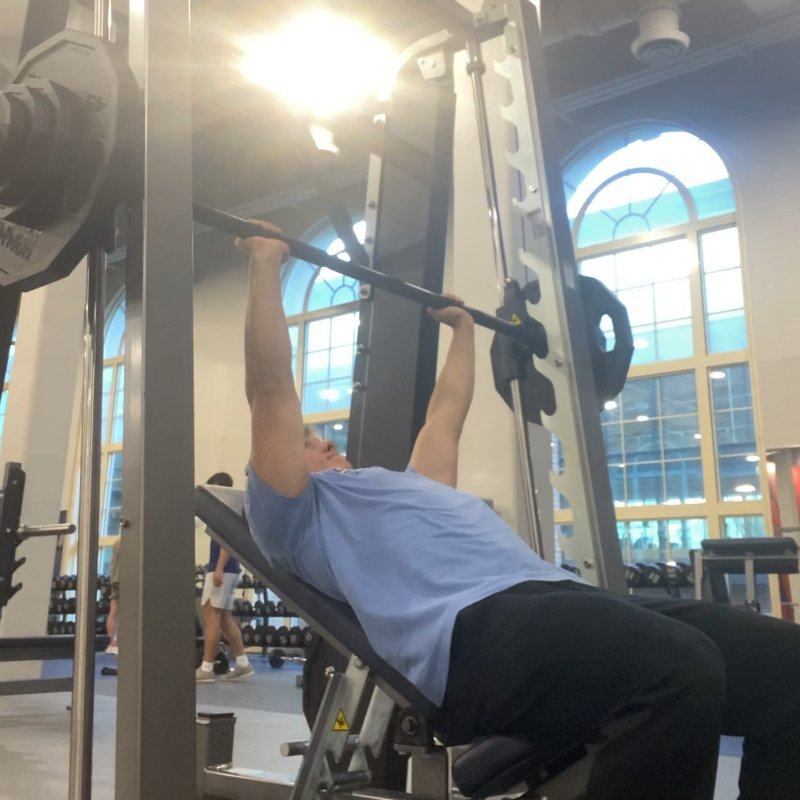
Log in to watch video demonstrations
Login to Watch3 video demonstrations available
Find more video demonstrations in the Gravitus app
Tips from the Community
-

Starting resistance 20lbs
Track your progress with Gravitus
Download Gravitus to log your workouts, track your progress, and join a community of fitness enthusiasts.

Helpful Resources
One Rep Max Calculator
Find your one rep max for any exercise without maximal testing. Essential for developing effective strength training programs.
Calculate 1RMWorkout Programs
Follow structured workout programs created by fitness professionals to maximize your strength and muscle gains.
View Programs